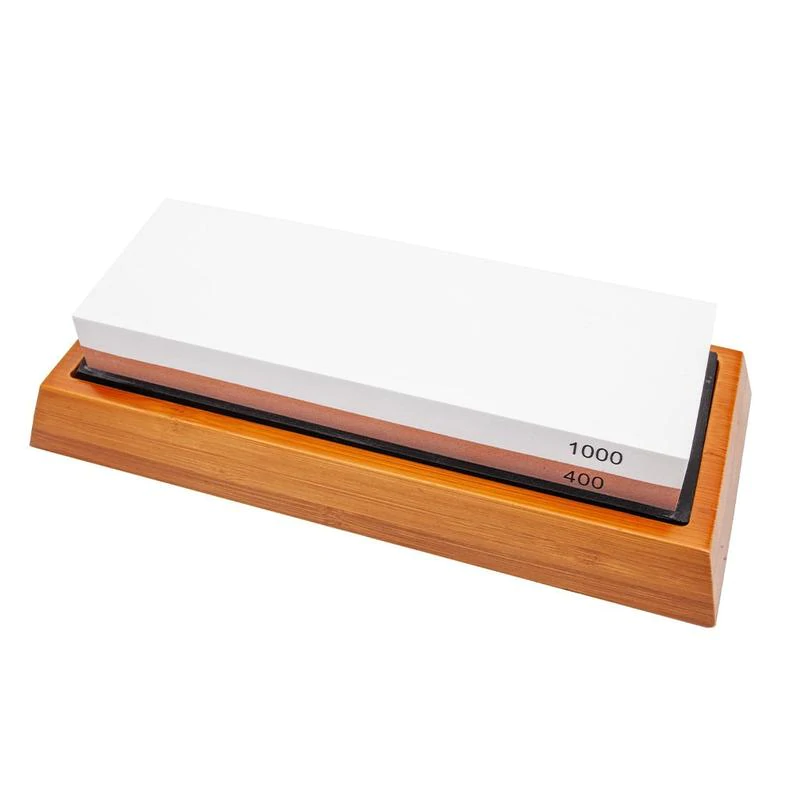The essence of a single bevel knife is the pursuit of a perfect edge. Chefs, knife enthusiasts, and culinary professionals hold single bevel knives with high regard. However, most people disregard the importance of a single bevel knife or are unaware that such knives even exist. So, what is a single bevel knife, and why is it so special?
A single bevel knife is a knife that has only one sharp angle on the edge. The blade’s grind is a single continuous incline/angle, rather than two grinds like most knives. A double bevel knife (what most of us are familiar with) has a grind that angles inward on each side of the blade to create a V-shaped edge.
This article will take you through all you need to know about single bevel knives. You’ll also learn the various uses of single bevel knives and how to sharpen them.
Table of contents
What is a single bevel knife?
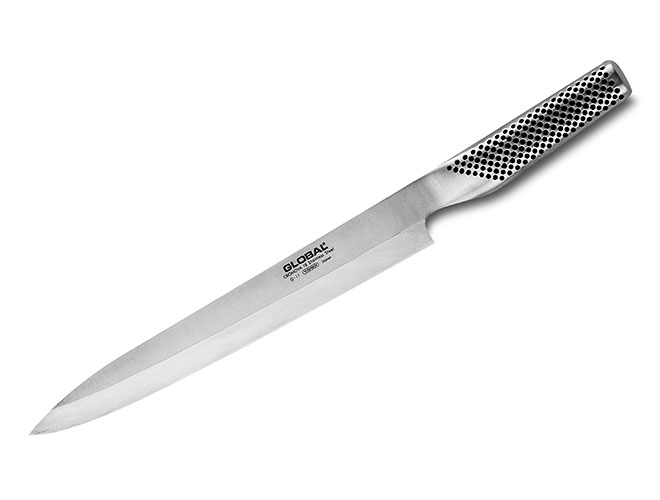
The origin of the single bevel knife is a bit of a mystery. Most believe that it originated in Japan. We know that this type of knife has been used for centuries by some of the world’s most acclaimed chefs and culinary professionals.
In a basic sense, a single bevel knife is a type of knife that has one sharp angle on the edge. The grounding on one side of the blade is a single continuous incline/angle instead of two grinds like most knives. Another name for this knife is the chisel grind because it features the same geometry as a wood chisel.
A single bevel knife can either be left or right-handed, and the bevel angle is usually between 15 and 20 degrees. A right-handed chef will use a right-hand bevel knife, whereas a left-handed chef would use the opposite.
Tradition
The Japanese tradition of using a single bevel knife steeps in centuries of customs and culture. They have long believed that a single bevel knife can create a perfect edge in a single stroke. The Japanese single bevel knife featured three main parts: the urasuki, the shinogi, and the uraoshi.
The shinogi is the flat surface of the knife that runs along the blade, while the urasuki is the concave surface located on the back of the blade. The thin rim surrounding the urasuki is called the uraoshi. It’s this delicate feature that gives the knife its unique cutting ability.
The western world significantly influenced Japanese knives from the 19th century towards the 20th century. During this period of modernization, Japan started crafting double-beveled knives. However, they continued crafting strategically designed single bevel knives ideal for slicing and dicing.
Single bevel knife uses
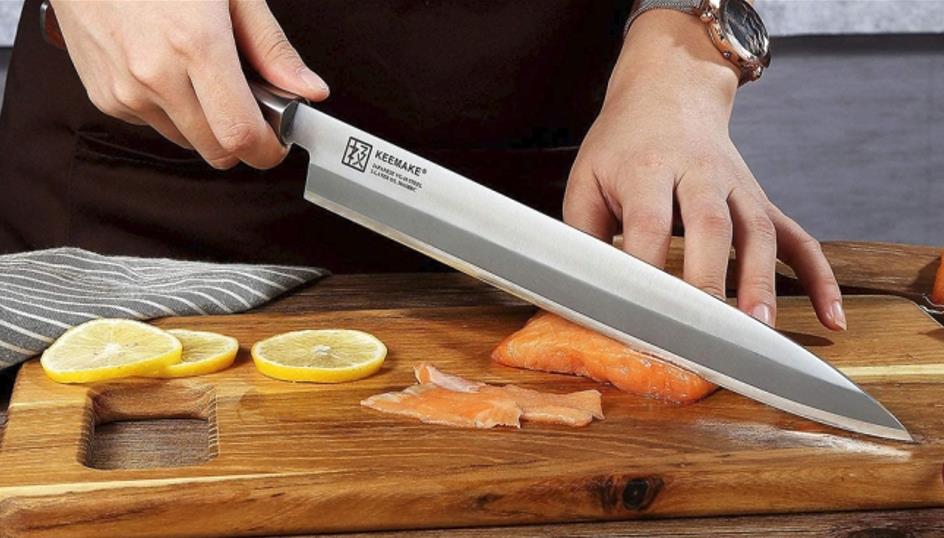
Single bevel knives are essential for any serious chef, culinary professional, or knife enthusiast. The single bevel knife’s properties lend themselves to certain uses that no other type of knife can handle.
Below are some of the most common uses for a single bevel knife:
- Slicing: A single bevel knife can perform proper thin slicing. Because of the knife’s continuous incline/angle, you can slice through food without fear of crushing or tearing it apart.
- Dicing: The thinness and precision of a single bevel knife make it perfect for dicing fruits and vegetables. The blade’s curvature ensures that every piece is uniform, and the dice itself is clean and precise.
- Chops: The superior cleanness of a single bevel knife is perfect for chiffonading herbs or slicing meats into thin strips. The blade’s curvature ensures you get the most out of your product with every cut.
- Sashimi: The single bevel knife’s thin-slicing abilities make it perfect for cutting sashimi-grade fish. The blade’s angle ensures that the slices are clean and precise, and the uraoshi helps keep the fish from sticking to the knife.
- Preparing sushi: Like sashimi, you can use a single bevel knife to cut sushi rolls. Because of the knife’s properties, it excels at handling raw fish and is a must for any true sushi lover.
Single bevel vs. double bevel
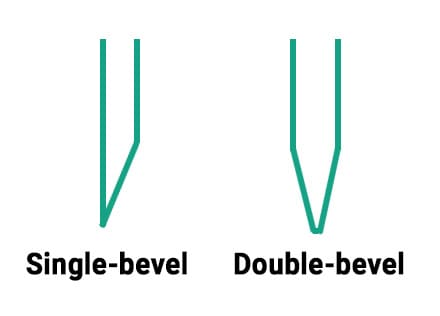
The main difference between a single bevel knife and the average double bevel knife is the blade’s angle. A double bevel knife has an equal grind on each side of its edge, whereas the single bevel knife only has one sharp angle on one side of the blade.
The table below further explains the differences between the two types of knives:
| Single bevel knife | Double bevel knife |
| Single bevel knife is mainly used in Asian cuisines | The double bevel knife is the standard type used in the western world |
| A single bevel knife is designed for precision slicing and dicing. | A double bevel knife is that it’s more versatile and can handle numerous tasks |
| The angle of sharpening single bevel knives is between 15-20 degrees | The angle of sharpening double bevel knives is between 20-30 degrees. |
Despite the double bevel knife being more versatile, the single bevel knife is still a popular choice for serious chefs and culinary professionals. The unique design of the blade and its ability to create a perfect edge in a single stroke is what sets it apart from the rest.
There is no wrong answer when choosing the right knife for the job. It all depends on what you’re looking for in a knife and what type of cuisine you’re preparing. But if you’re looking for a knife that delivers absolute precision, then you should consider investing in a single bevel knife.
How to sharpen a single bevel knife
A sharp knife is a safe knife, and it’s imperative to keep your single bevel knife sharpened at all times. The angle of the blade makes it more susceptible to dulling, so you’ll need to sharpen it more often than a double bevel knife.
There are a few different ways you can sharpen a single bevel knife:
- Using a whetstone
- Using a sharpener
Using a whetstone
The most traditional method for sharpening knives is using a whetstone. Single bevel knives can be a little tricky to sharpen, so it’s important to follow these steps:
Choose a whetstone
The first step is choosing the right whetstone to use. Whetstones come in different grit levels. Depending on how dull your knife is, you should pick a stone that is either finer or coarser.
A fine grit whetstone is ideal for sharpening knives that are already sharp. Coarse grit whetstones are ideal for dulling and fixing blade damage. Medium grit whetstones can be used for regular sharpening and edge maintenance.
Handpicked for you
True cutting power in the palm of your hand
- Position the whetstone on a flat surface. You’ll need to find a flat surface where you can place your whetstone. Ensure there’s enough room for the blade and the stone and that the surface is stable.
- Soak the whetstone in water for a few minutes before use. If you’re using a dry stone, a little water will help the blade glide across the surface.
- Hold the knife handle with your dominant hand and place the blade on the whetstone at a 20-degree angle.
- Gently move the blade back and forth across the whetstone. Apply a little pressure and keep the angle consistent throughout the length of the blade.
- Repeat the process until a burr appears on the other side of the blade. The burr is a small, thin line that forms on the opposite side of the blade. A burr can also be flat or rounded, depending on the sharpness of your blade.
- Once the burr appears, change the whetstone to a finer grit and repeat the sharpening process. A finer grit whetstone will remove the burr and polish the blade.
- The last step is to toughen the blade using a honing rod. Five or six strokes should be enough.
- Wash the blade with mild soap and water. Rinse and towel dry the blade before storing.
Using a sharpener
Using sharpeners is a quick and easy way to sharpen your single bevel knife. However, most sharpeners are designed for double bevel knives, so choosing one that won’t damage the blade is important.
A single edge sharpener is ideal for single bevel knives. It sharpens at 20-degree angles and has a built-in guide that ensures even sharpening.
Follow these steps:
- Position the sharpener on a secure and flat surface. Ensure there’s enough room for the sharpener to sit firmly on the surface without falling over.
- Hold the knife handle with your dominant hand and place the blade on the sharpener at a 20-degree angle.
- Slowly move the blade through the sharpener towards your body. Apply some pressure and keep the angle consistent throughout the length of the blade. Ensure you go along with the contours of the knife blade.
- Repeat the process until a burr appears on the other side of the blade.
- For multistage sharpeners, switch to a finer grit after the first stage. Each pull through the sharpener should be around three seconds.
- Use soap and water to clean the blade after each use.
Do you need a single bevel knife?
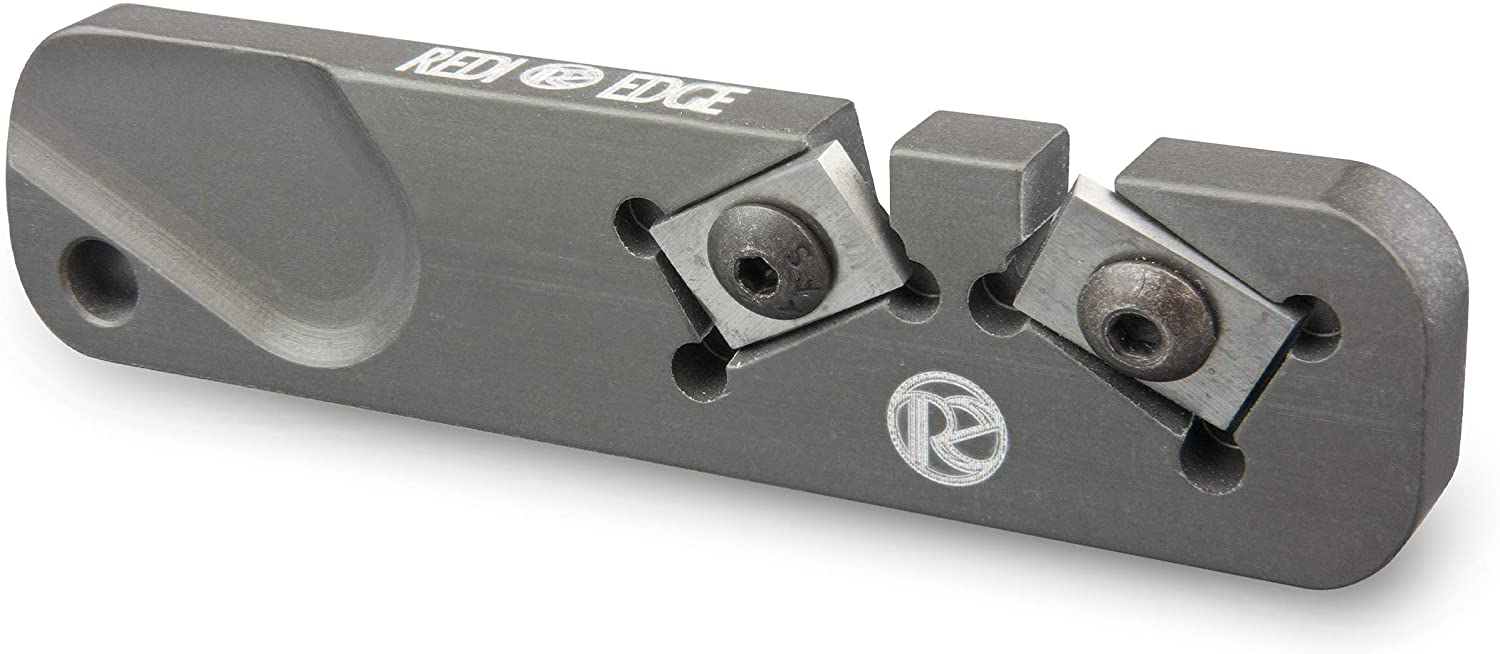
A single bevel knife is ideal for tasks that require a lot of precision, such as slicing sushi or carving vegetables. The blade is often super thin and sharper than a double bevel knife. While a double bevel knife is more versatile, a single bevel knife can provide better results for some tasks.
The Japanese have been using single bevel knives since medieval times. Today, many Japanese chefs and artisans prefer a single bevel knife as their main tool. A single bevel knife lets chefs make long, slicing cuts with ease and control.
A single bevel knife is a great option if you’re looking for a knife that can handle precision tasks. The thin blade and sharp cutting edge make it the perfect tool for slicing sushi, vegetables, and more. Just be sure to take care of your knife and use a honing rod to keep it in top condition.
If you are a novice in the kitchen, you may want to start with a double bevel knife. They are the most common type of knives used in homes and restaurants worldwide. But, if you’re looking to hone your precision skills, starting with a single bevel knife may be the way to go.
How to take care of a single bevel knife
A single bevel knife is more delicate than other types of knives. Like any other culinary equipment, you must understand how to keep your kitchen knives sharp and in top condition.
Here are some tips on how to take care of your single bevel knife:
- Use it for the intended purposes only: A single bevel knife is best for slicing and carving, not hacking. If you attempt to hack through thick bones or hard foods, you can damage the blade.
- Store it properly: When not in use, store your knife in a safe place where it will not get bumped or knocked around. A knife block or magnetic strip are both good storage options.
- Wash and dry it after each use: Soap and water will remove any food or debris accumulated on the blade. Be sure to towel dry the blade and store it in a dry place.
- Hone it regularly: Use a honing rod to keep the blade sharp. The honing rod will help remove any small burrs or nicks that may form with continued use.
- Use a wooden cutting board: A wooden cutting board is the best surface to use with a single bevel knife. The best wood for a cutting board should be durable, water-resistant, and easy to maintain. Hardwoods, such as oak or maple, make good cutting boards.
Types of Japanese knives with single bevels
Most Japanese kitchen knives come with a single bevel edge. Before the western influence of double bevel knives, chefs in Japan used a single bevel knife exclusively. Today, you can find several Japanese knives with a single bevel edge.
Some common types of knives with single bevels include:
Gyuto
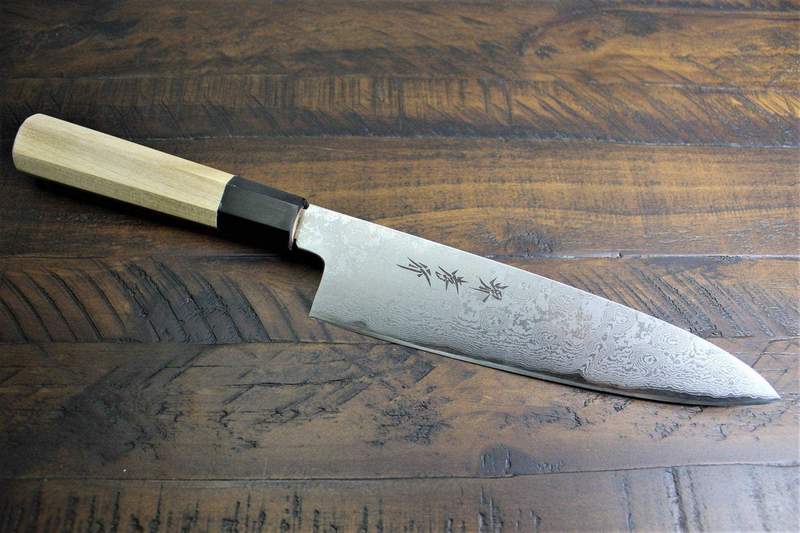
A Japanese chef knife or cooking knife, similar to a western chef knife. The gyuto knife is the most versatile type of single bevel knife and can handle any task in the kitchen. It has a long narrow blade but is wide enough to create thin slices.
While most gyuto knives are double bevel knives, a few single bevel options are available.
Santoku
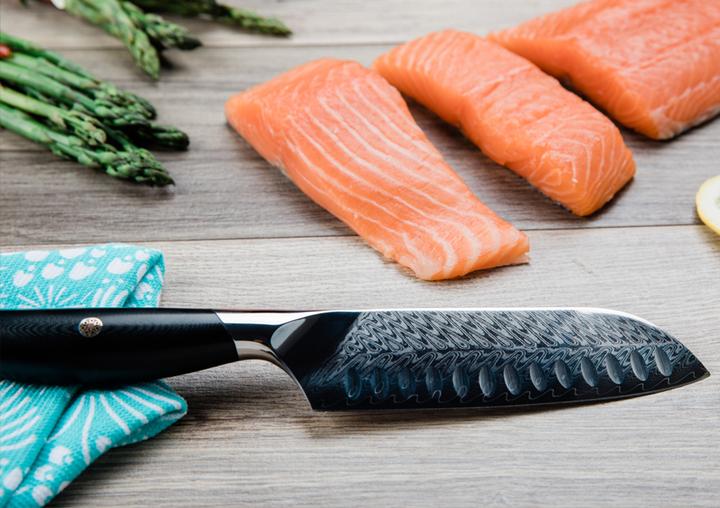
A Japanese Santoku knife is shorter than a gyuto and features a wider blade with a straight edge. While the santoku can handle any task in the kitchen, it is ideal for cutting, slicing, and chopping.
The santoku and the gyuto are very similar and can be used interchangeably. Remember that the santoku is shorter and has a straight edge, while the gyuto features a longer blade and is curved at the front.
Sujihiki
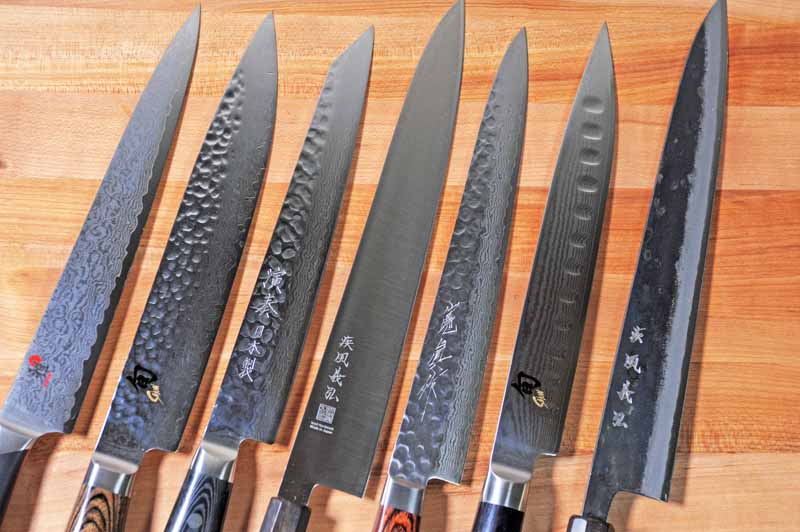
This is a long and narrow Japanese knife with a sharp tip. The long blade makes it possible to slice through meat and fish with a single but smooth motion. The sujihiki is a great choice for slicing and carving meats.
Kiritsuke
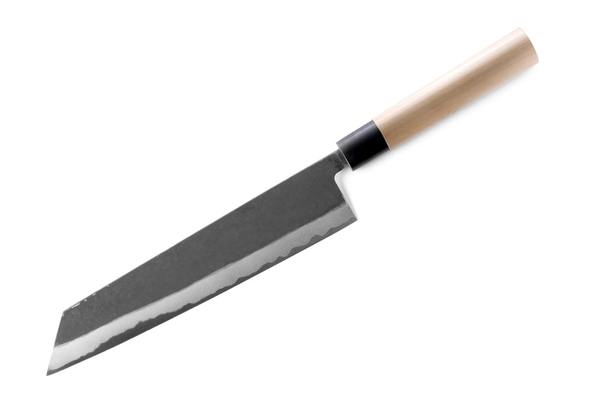
The Japanese version of a hybrid knife. The blade is between a sujihiki and gyuto, combining the best features of both knives into a single blade. Chefs mainly use it for slicing thin fish, vegetables, fruits, and meat. The kiritsuke is one of the most difficult single bevel knives to use and is a show of status and class for a chef.
Nakiri
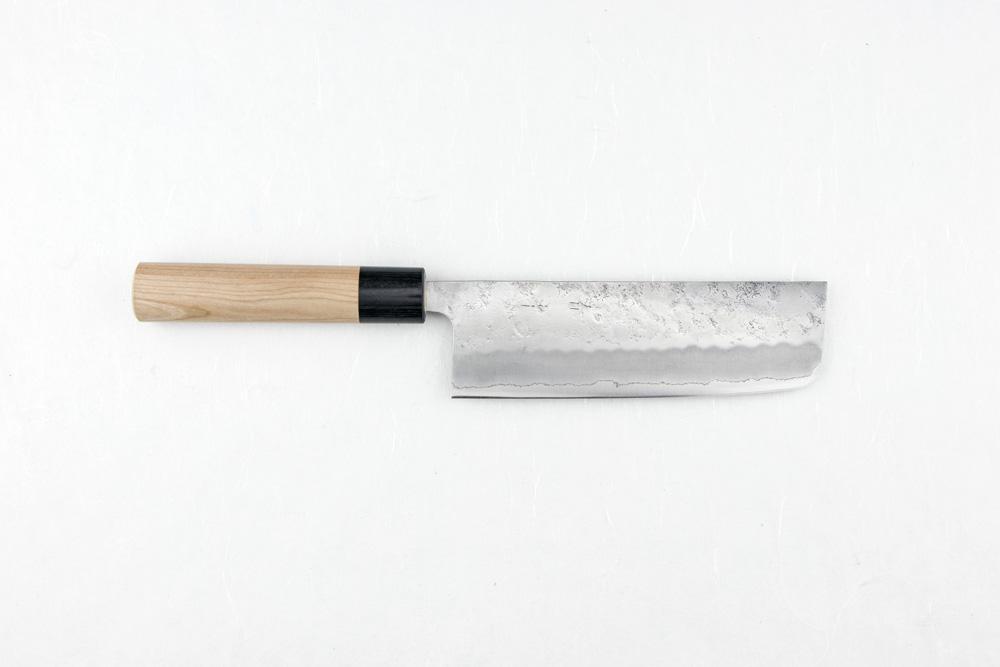
The Nakiri is a vegetable knife with a straight-edged blade and a slight square tip at the front. This knife is thinner and lighter than a Chinese cleaver. The nakiri is ideal for chopping vegetables and fruits, but it can also work well with meaty bones and harder vegetables like sweet potatoes and winter squash.
Single bevel knife FAQs
Which Japanese knives are single bevel?
Several Japanese kitchen knives come with a single bevel edge. The most common knife with a single bevel is the Gyuto, which is similar to a western chef knife. Other knives with a single bevel include the Santoku, Usuba, Deba, Sujihiki, and Kiritsuke.
Is a single bevel knife better than a double bevel knife?
A single bevel knife is not better than a double bevel knife. A double bevel knife is more versatile and easier to use. While a single bevel knife is harder to sharpen, the flatter blade offers less friction while cutting through food. It is also better for slicing and carving meats.
Are single bevel knives left or right-handed?
Single bevel knives can either be left-handed or right-handed. Make sure to check the product description and specifications for more information about which type you are purchasing. A left-handed bevel will have the bevel on the opposite side of your dominant hand.
Closing
Single bevel knives are an interesting addition to the kitchen. They require more dedication and practice to use, but the reward is more precise slicing and carving. If you’re looking for a knife that can handle all types of tasks, then a double bevel knife is the best option. But, if you’re looking for a knife that can specialize in slicing and carving meats, a single bevel knife is the way to go.
Visit our store to find a wide selection of high-quality kitchen knives and accessories.


